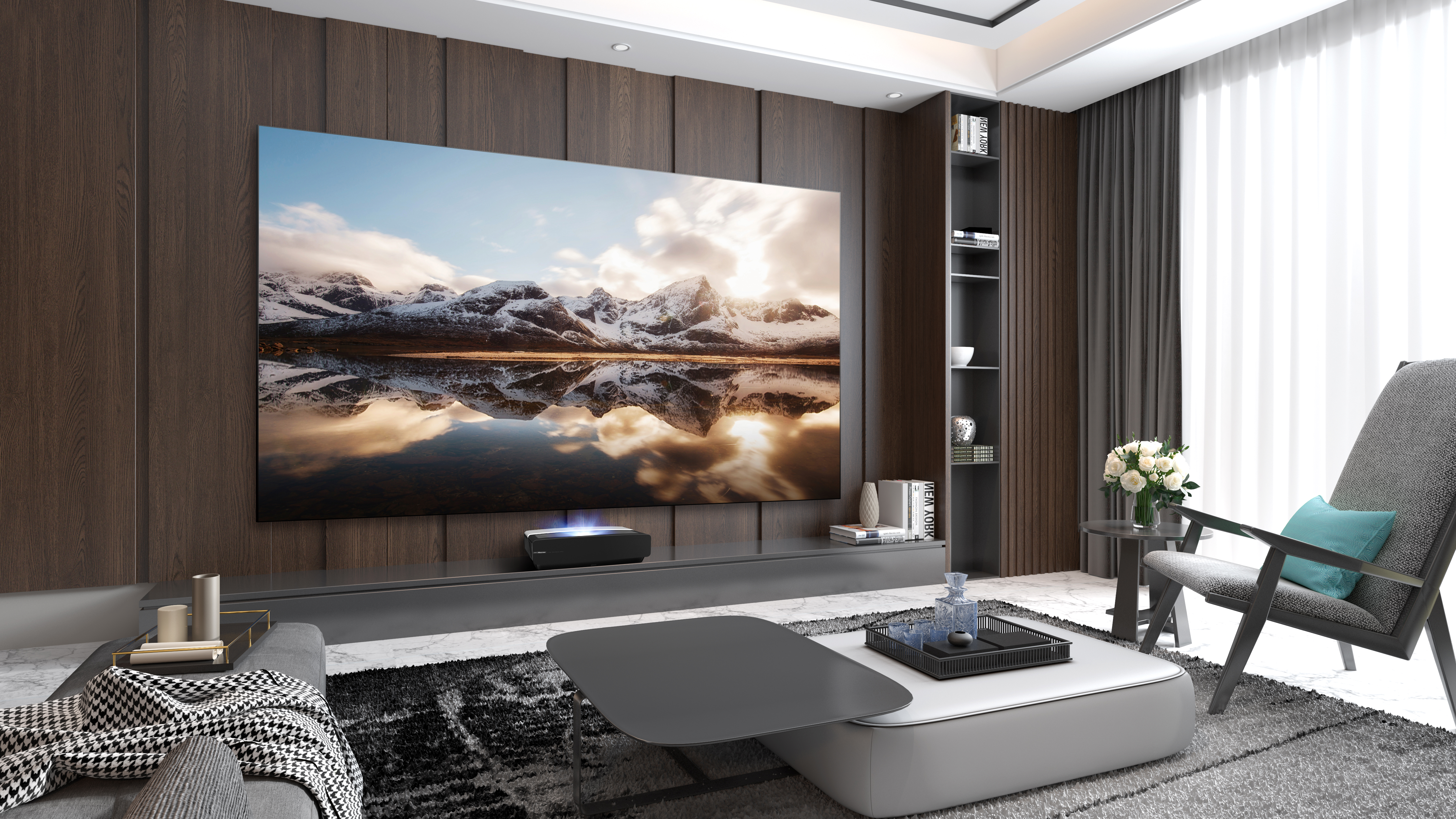
If the news of theaters closing down has you wishing for that big-screen experience, Hisense has some good news for you: it’s releasing a massive laser TV system that can bring the magic of the silver screen into your own home.
Available next week, Hisense will be offering a new 120-inch version of the L5F Series Laser Cinema TVs on Amazon. The L5F has Android TV built in and can reach a peak brightness of 2700 nits – not too shabby for an ultra-short throw projector.
Unfortunately, it also comes at a steep price: $5,000 for the new Hisense L5F versus the $3,500 sticker price for last year’s 100-inch model. That makes the L5F more expensive than some 75-inch 4K TVs and more than most OLED TVs, too. (There's no word yet on UK availability, but last year's L5F launched on AO.com for £5,000, so we expect the new version to make its way there eventually as well.)
Thankfully, the L5F comes with an ambient light-rejecting (ALR) screen and an embedded 30W speaker system to help justify the cost.
Laser TV vs LED: which is better?
While there aren’t many laser TVs on the market – most come from Hisense, Epson or Vava – there are enough that they’re worth your consideration if you’re torn between a laser TV (essentially an ultra-short throw projector) and an LED-LCD TV.
Comparing the two is a bit like comparing apples and oranges given the different light emission and display technologies that they employ, but in practice most high-end 4K LED-LCD TVs are going to be just as bright and colorful as this laser TV, and cost a heck of a lot less. They're also likely to support more HDR formats (the Hisense L5F only supports HLG and HDR10) and TVs don't have to worry about replacing the light bulb every 25,000 hours.
The argument for Hisense laser TVs is that they're more versatile in where they can go because you don't need massive pieces of furniture to put them on, and they can obviously offer a slightly larger screen size than LED-LCD screens can.
Get daily insight, inspiration and deals in your inbox
Sign up for breaking news, reviews, opinion, top tech deals, and more.
Ultimately, both have their own advantages and disadvantages, and which one you should go with should be decided by how much space you want to fill and how much you're willing to drop on some new AV gear.
- Looking for a new 4K TV? Don't miss our guide to the best TVs of 2021
Nick Pino is Managing Editor, TV and AV for TechRadar's sister site, Tom's Guide. Previously, he was the Senior Editor of Home Entertainment at TechRadar, covering TVs, headphones, speakers, video games, VR and streaming devices. He's also written for GamesRadar+, Official Xbox Magazine, PC Gamer and other outlets over the last decade, and he has a degree in computer science he's not using if anyone wants it.
